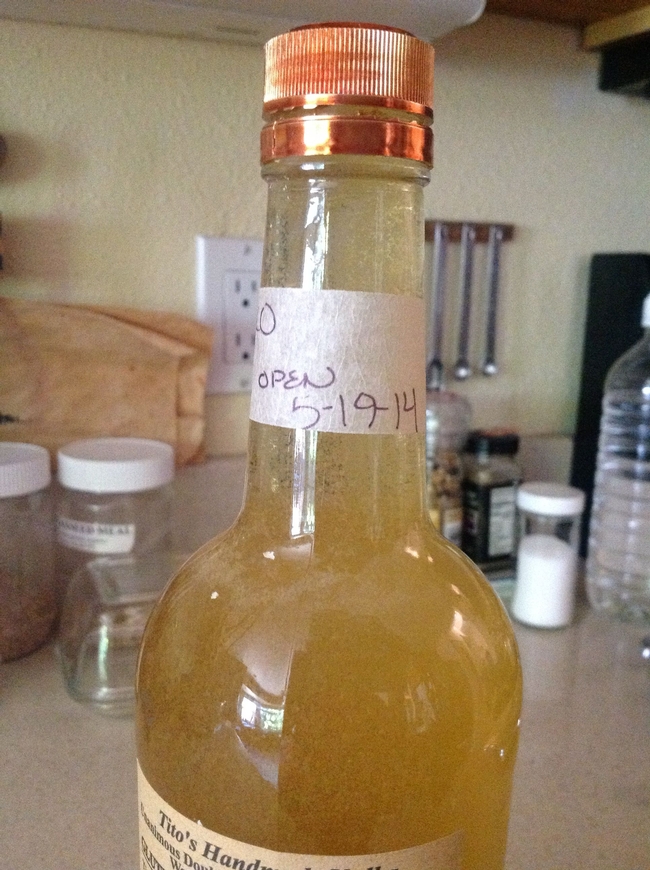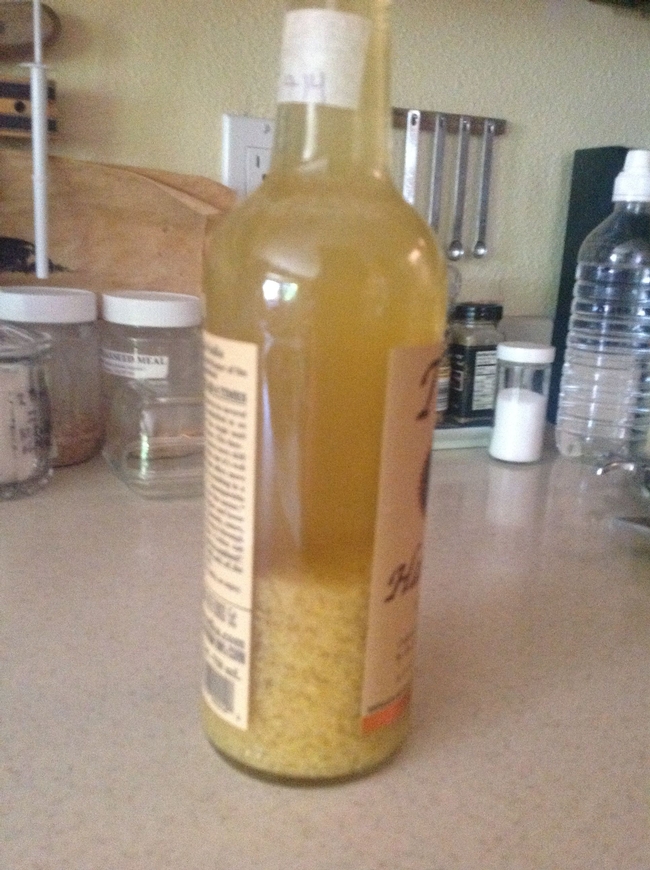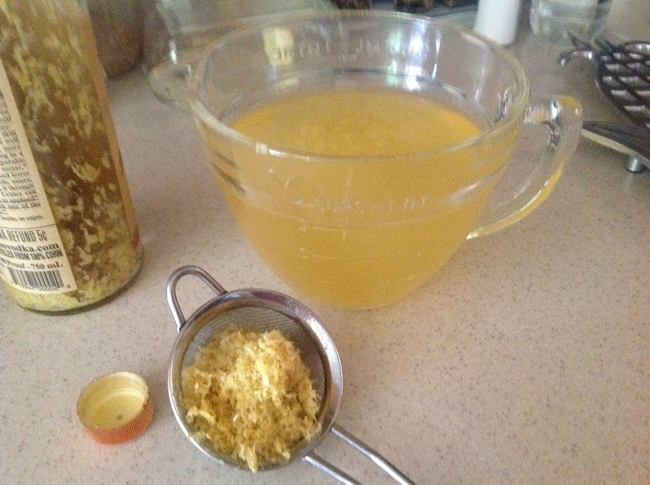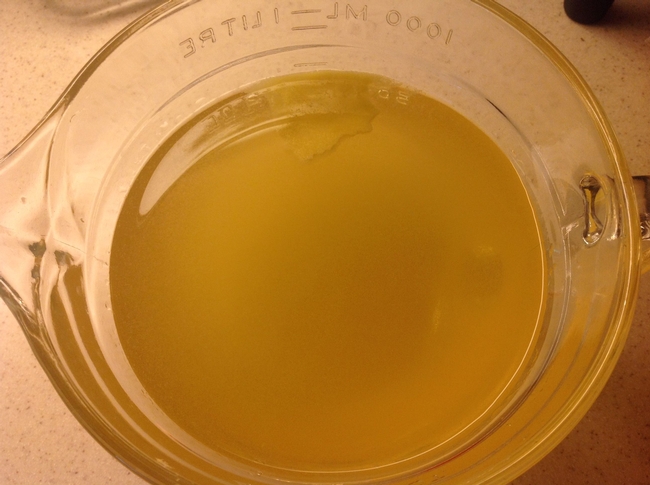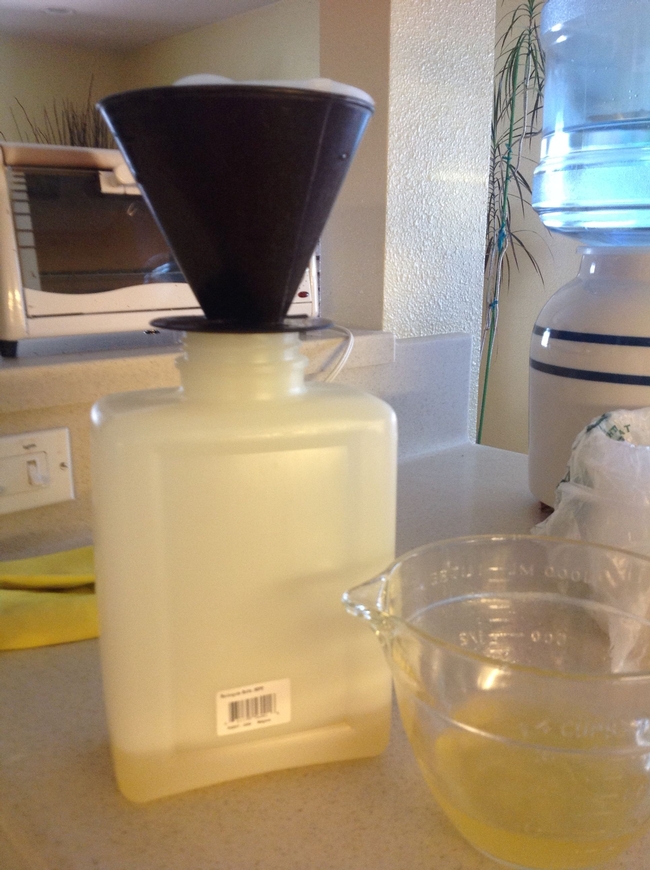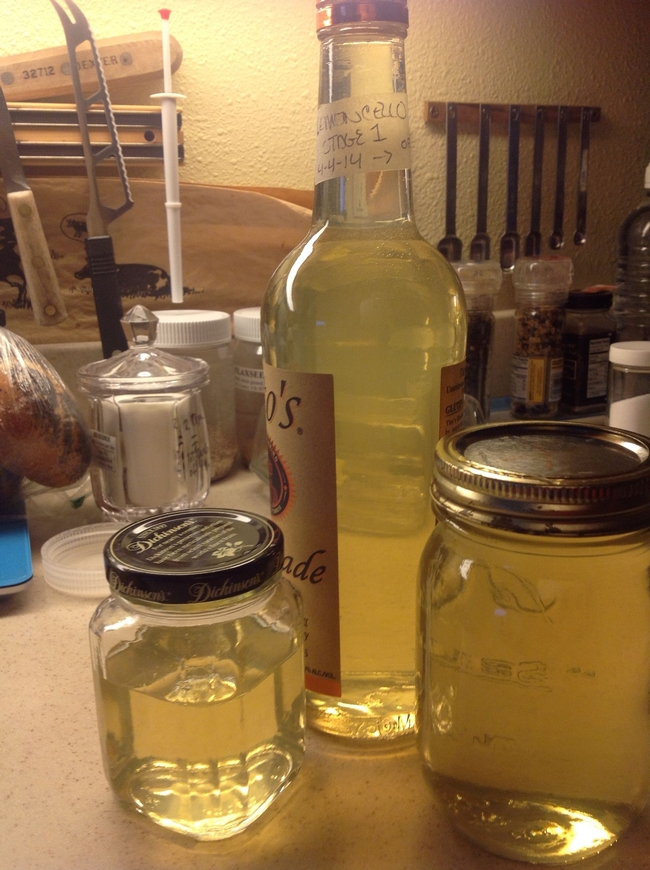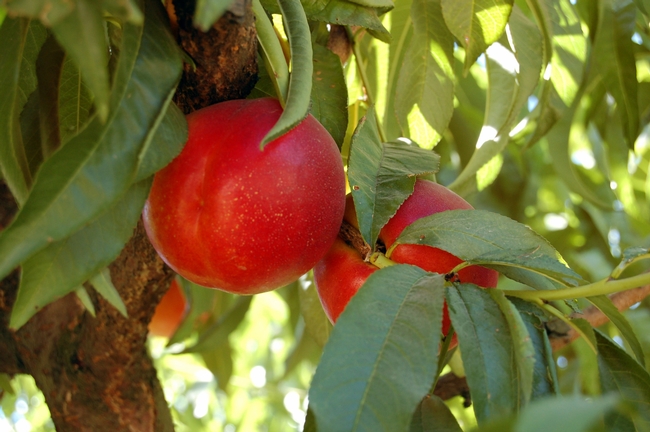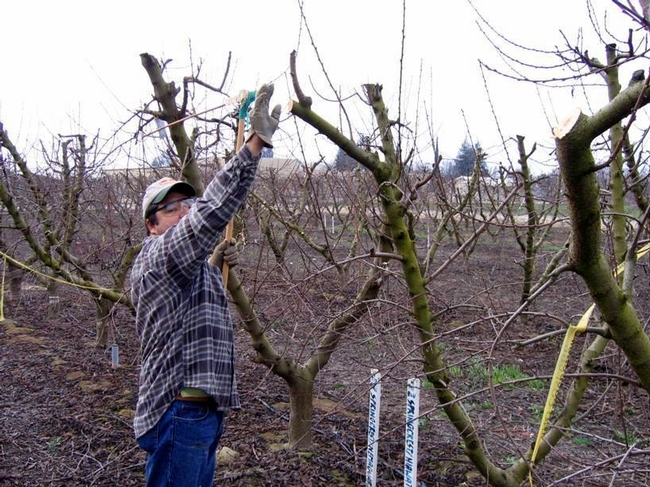UC Food and Agriculture Blogs
Are Farmers' Market Prices Really More Expensive?
Are Farmers' Market Prices Really More Expensive? That was one of the questions we set out to explore this year with the Eat Local Placer-Nevada project. Why are we concerned about cost when it comes to local produce? One of the goals of the Eat Local...
About that lemoncello
One of the hazards of contributing to a shared blog, is that one forgets to post. So in this case, while I said in my last post that we would re-visit the lemoncello in mid-May, here it is September. Time flies.
The lemoncello is a huge success, we've been enjoying it on the hot summer afternoons that are plentiful in Davis. And here's how I got from pith to pleasure . . . .
The first steps in the lemoncello process were documented in this early Spring post. The recipe calls for 6 weeks of steeping the lemon zest in the alcohol in a cool, dark place; preferably, in a place where it won't be disturbed. I had placed mine in a place so cool, dark, and undisturbed it took me 45 minutes to find it.
But that resolved, I moved to the next step - filtering.
You can see that the zest from all of those lemons has settled to the bottom of the bottle. Lemoncello aficionados recommend a 2-step filtering process. The first step is to get most of the zest out using a fine sieve.
Look at all of this zest!
Quite a bit of solid material is left in the liquid after this process.
To remove these last solids, the liquid is filtered through a paper coffee filter. (Lemoncello purists, like coffee purists, would object to the use of a paper filter, saying it imparts a paper flavor.)
The next step is to add the cooled simple syrup. The basic simple syrup recipe calls for equal parts of sugar and water, but for lemoncello less sugar is used. For one 750ml bottle of base alcohol, you need 2-1/2 cups of water and 1-3/4 cups sugar. Add the sugar to the water in a medium saucepan and heat over medium heat. Bring to a gentle boil, stirring constantly, until the sugar is dissolved. Let the mixture cool completely to room temperature before adding to the lemoncello base.
Decant the mixture, and put in a cool, dark place for another 45 days. The addition of the simple syrup increases the volume, so you can't fit your mixture into the original bottle.
This mixture was moved into two tall glass bottles and set aside until early July.
You can put the finished lemoncello in the freezer or in the refrigerator. Enjoy it alone or in a cocktail on a hot summer afternoon when you need a little something refreshing!
If you want to make your own lemoncello, an excellent resource is the blog LemoncelloQuest.
Scale Insects: Recognizing and Managing
People sometimes don't recognize scales as insects, but understanding scale types and signs of their presence will enable you to best manage them if encountered on your plants. Scale insects are circular, elongate, or oval insects that often resemble...
UC explores ladderless peach and nectarine orchards
Can shorter peach and nectarine trees reduce labor costs?
The answer may be developing soon at a 4-acre test orchard south of Fresno, where University of California researchers are planting semi-dwarfing rootstocks as part of a large, integrated experiment on virtually every aspect of peach and nectarine production.
“We're designing ‘ladderless' orchards, which have the potential to cut labor costs by 50 percent or more and improve worker safety,” said UC Cooperative Extension specialist Ted DeJong, a plant physiology professor at UC Davis. DeJong and Kevin Day, a Cooperative Extension farm advisor in Tulare County, are leading the extraordinary experiment.
Conventional peach and nectarine trees grow about 13 feet tall. Setting up, climbing and moving ladders to prune the trees and harvest fruit consumes about half the workday. Ladders are dangerous, too, which is why peach and nectarine growers pay about 40 percent more for workers' compensation insurance than growers who work with more low-lying commodities, like grapes.
Developed by breeders at UC Davis, the new rootstocks will produce trees that grow about 7 or 8 feet tall and can be pruned and harvested from the ground. With the right orchard management — which Day and DeJong will test at their plots at the UC Kearney Agricultural Research and Extension Center, near Fresno — the shorter trees could produce just as much high-quality fruit as their lofty kin.
“Ladderless orchards would be huge for our industry,” said Bill Chandler, who grows several varieties of peaches and nectarines on his 250-acre Chandler Farms in Selma, California. “There are so many costs associated with ladders that many growers are switching over to almonds just to stay in business. It costs me $1,400 an acre to thin our trees.”
“Even with conventional rootstocks, I prune my trees so workers can take two fewer steps on the ladder come harvest time,” he said. “And the savings are huge, even with that. It's important to keep farm work safe. And it's important to keep farming viable, or else we'll be getting all our produce from overseas.”
Shorter trees are just one of the elements of DeJong's and Day's experiment, which explores best practices for keeping peach and nectarine production economically and environmentally sustainable. Funded by the UC division of Agriculture and Natural Resources, their model orchard will integrate virtually every UC pomology advancement in the past 30 years.
You can read more at: http://www.caes.ucdavis.edu/news/articles/2014/08/ladderless-peach-and-nectarine-orchards-explored
The Good Side of Pruning
In the December 2013 issue of the Green Bulletin, we looked at “Pruning and Tree Physiology: The Bad and the Ugly” for pruning and maintaining ornamental trees as well as some pruning pitfalls. However, pruning can also be highly beneficial...



